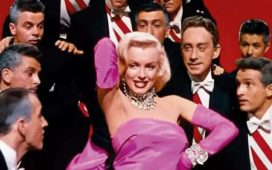
Cultures that are output-oriented tend to inject greater (quantifiable) value to creatively produced products than input-oriented ones. For the latter, more value is given, for instance, to how much effort – work – has been put in, in the making of the object. For the former, after the basic input costs are taken into account, what you see becomes the starting point of determining its value.
Thus, an input-oriented society will extoll production in scale, how many hours employees clock in and out at work, etc. The output-oriented one cares only for the result, no matter how little effort it may have taken. If the same Rome had indeed been built in a day, the city council would have paid the urban planners and architects very differently in both scenarios.
But how does the valuation of output-oriented cultures work? ‘Salvator Mundi‘ (The Saviour of the World), attributed to Leonardo da Vinci, is the most expensive painting in the world, sold for $450.3 million in 2017 to Saudi Arabia’s Mohamed bin Salman, for what I can only presume bragging rights, since it has never been exhibited since its purchase. The 5th most expensive painting today is Andy Warhol’s ‘Shot Sage Blue Marilyn’, part of the artist’s 1964 silkscreen paintings series, which was sold at $195 million to American art dealer Larry Gagosian. So, is da Vinci’s painting $255.3 million better than Warhol’s? Will Marilyn get ‘better’ or ‘worse’ over time relative to the Saviour?
The answer lies in the stories, the ‘critical’ narratives, the Cultural Apparatus, that are rightly made to swirl around all value-abled things. The value is tied to a host of intangibles -critical commentaries, biographical tickertaping of creators and creations, the valuation feedback loop that makes an object more valuable by giving it more value, the zeitgeist, media mediation, figures associated with the products…. etc etc/yada yada (whichever suits your disposition).
On paper, these value-slatherings can look ridiculous. And for overwhelmingly input-oriented cultures like ours, they look like self-contained cons where the value of something comes only from the value one gives it, and not ‘intrinsically’, whatever that may mean. In that sense, valuation is a con. But it is a con where disbelief is suspended by cultural club rules. After all, what sorcery makes an Indian writer suddenly jump in value after she or he wins a Booker Prize? Or in the case of Rabindranath Tagore lauded at home only after he won a Nobel? But once in a while, there comes a pinprick in this carefully curated balloon. The same week that Amrita Sher-Gil’s ‘The Story-Teller’ became the most expensive Indian artwork, fetching ₹61.8 crore ($7.44 million) – Indian media tends to get shy about buyers, for some reason – Jens Haaning, a Danish artist, was ordered by the court to return the nearly 5 lakh kroner ($72,000) to the museum that had lent him the amount in currency notes to be used in two pieces of artwork. Entitled ‘Take the Money and Run’, Haaning’s work comprised two stark raving blank white mounted canvases. ‘I saw, from my artistic point of view, that I could create a much better piece for them than what they could imagine,’ he explained. ‘I don’t see that I have stolen money… I have created an art piece, which is maybe 10 or 100 times better than what we had planned. What is the problem?’ I agree with him. And I do foresee ‘Take the Money and Run’, (photo) becoming far more valuable than it was before it was invested with the powerful story of how valuation is lovingly manufactured from much more than the sum of its parts.










